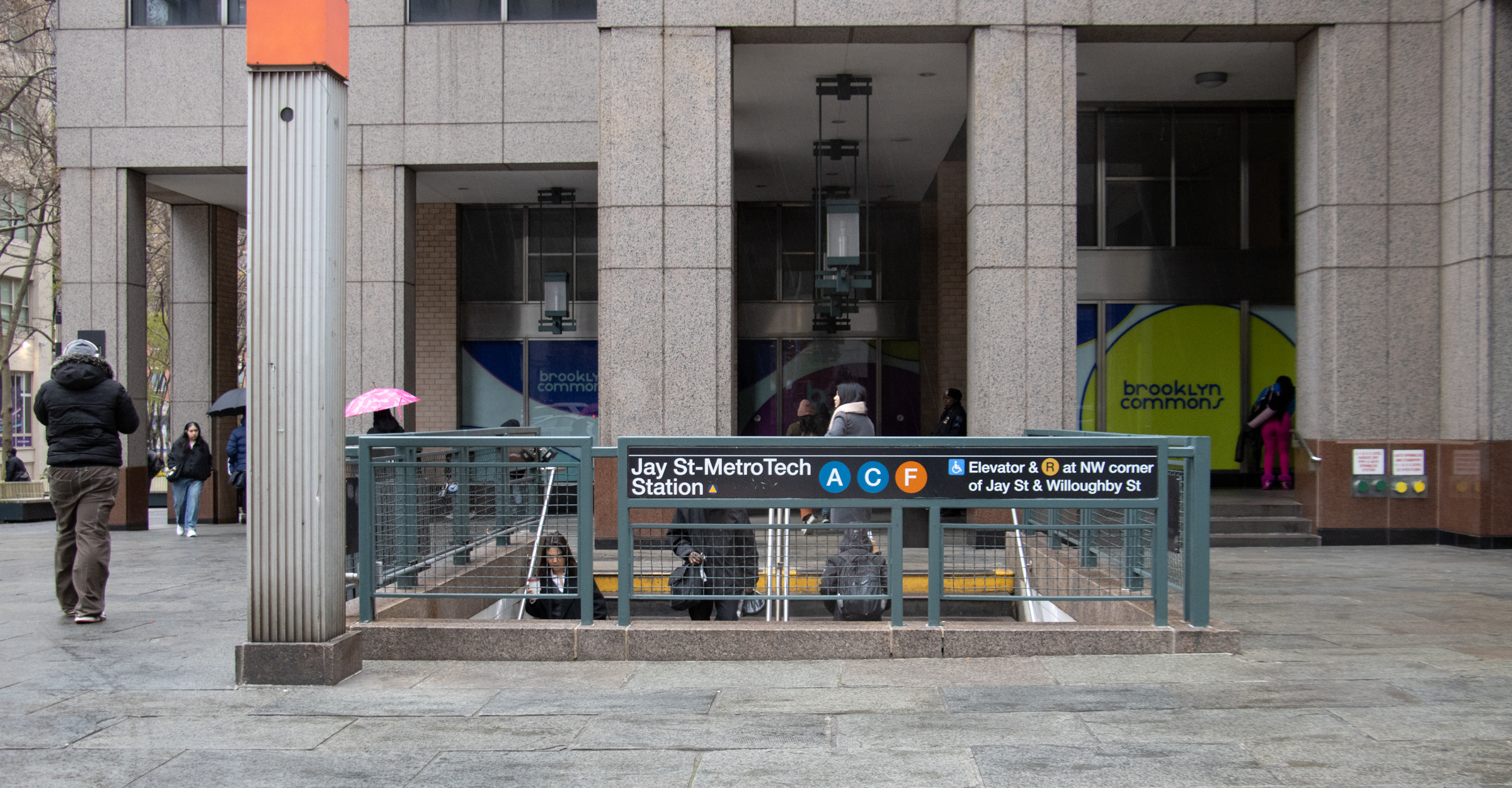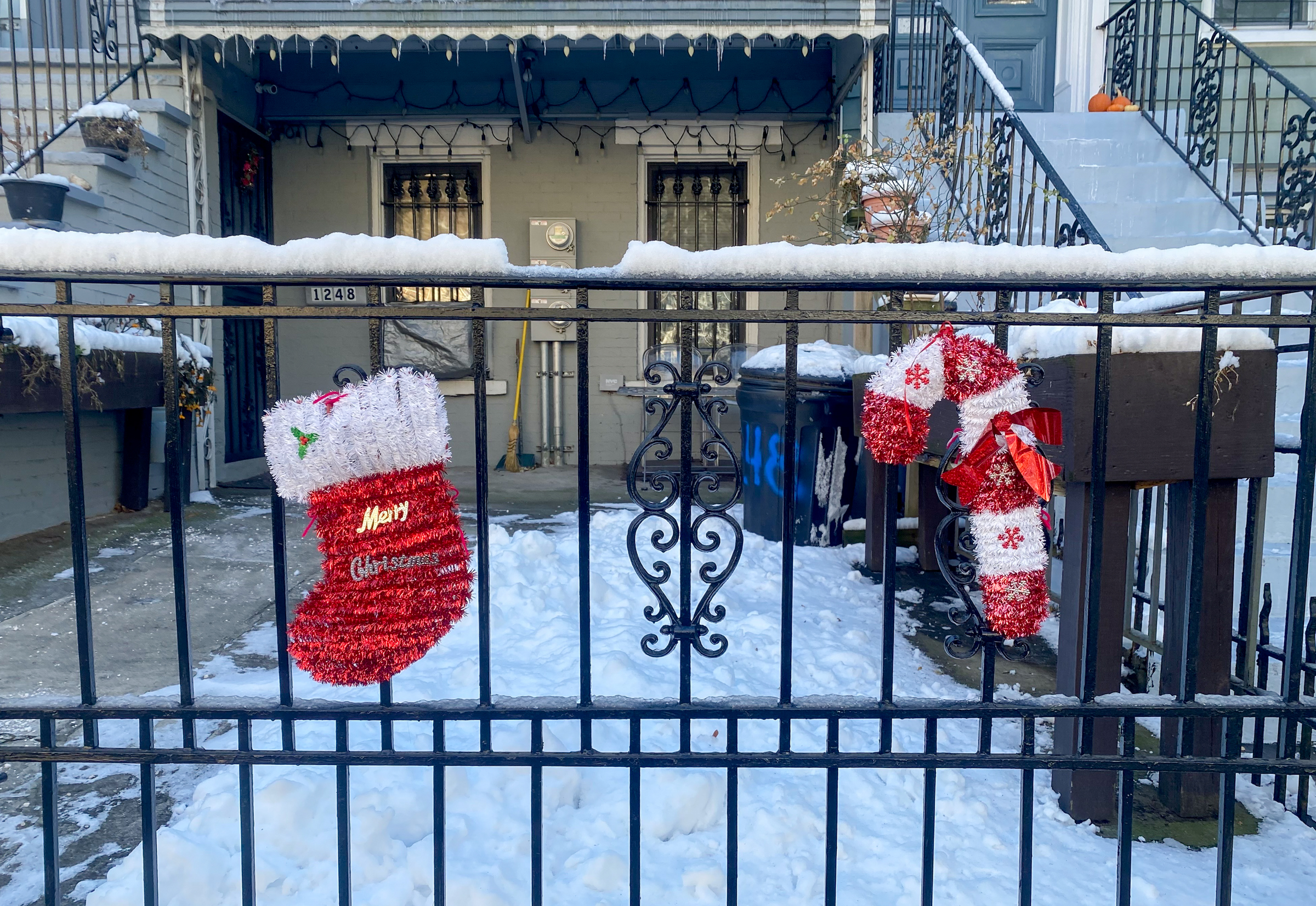Emergency Demo at 100 Clark Clears Tenants
[nggallery id=”21618″ template=galleryview] After years of neglect, the beautiful brick building at the corner Clark Street and Monroe Place in Brooklyn Heights was partially torn down over the weekend due to conditions that were deemed “imminently perilous to life”; two floors of the 15-unit building were torn down following a 311 call that reported visible…

[nggallery id=”21618″ template=galleryview]
After years of neglect, the beautiful brick building at the corner Clark Street and Monroe Place in Brooklyn Heights was partially torn down over the weekend due to conditions that were deemed “imminently perilous to life”; two floors of the 15-unit building were torn down following a 311 call that reported visible buckling. “It’s been a very, very badly neglected building,” Frank Folisi, landlord of the building next door, told The Post. “Everyone who has owned this building has taken money out of it and not put any money into it. I don’t walk on that side of the street anymore.
The theory over on the Brooklyn Heights Blog is that owner Penson Companies, which bought the building for $3,650,000 in 2006, had a strong financial incentive not to step in sooner to save the building. Why’s that? Because condemnation was the only way to get free and clear of the three remaining rent-stabilized tenants. The marketing document (excerpted on the jump) Penson has been using in recent months to try to sell the building (the price had started at $4.45 million but had recently gotten as low as $3.5 million) reveals that the tenants were paying monthly rents of $550, $617, and $575 and that approved plans had been approved by Landmarks for a rear extension that would have taken the size of the building from 8,000 square feet to 9,750 square feet. So we’re talking about the difference between the building being worth $3.5 million and $10 million. Sound like reason enough to look the other way? Now, many questions remain: What happens to the homeless tenants? Will the rest of the building be torn down? What will Landmarks require for rebuilding? Are there any criminal consequences for this type of neglect? Enquiring minds want to know.
Tenants Flee Buckling Heights Building [NY Post]
Penson to Brooklyn Heights: Drop Dead [Brooklyn Heights Blog]
‘Dereliction of Duty’ in Brooklyn Heights [Brownstoner]
Photos 1-9 by Ali Lovell; 10 by Chris in the Heights








NYC is the only place I’ve ever been where a property owner can literally allow a building to sit there and decay and crumble and become a hazard, causing things to fall on people and cars in the street (like the building at 7th Ave and 2nd St in PS) with hardly any consequences. Perhaps some fines that are relatively tiny compared to the value of the property. You won’t see this elsewhere in the country. You sure as hell won’t see it in Europe. I’m sick and tired of seeing these dangerous eyesores in every neighborhood of Brooklyn. It’s an embarrassment and should be shameful for the city. You’d think! I just don’t get it at all.
Wonder if any of these tenants own a nice house in the Hamptons?
My first proposal regarding rent regulation – if you own a second property, you have no right to a rent-regulated apartment.
Tscola – “It’s been a very, very badly neglected building,” Frank Folisi, landlord of the building next door, told The Post. “Everyone who has owned this building has taken money out of it and not put any money into it. I don’t walk on that side of the street anymore.”
Why has “everyone who has owned the building” allowed it to fall into a state of disrepair? Because it was in the landlord’s interest, ie., profitable, for them to do so. It’s the law that produces these results as various landlords all reached the same conclusion.
tscola has it right.
Penson overpaid for a stabilized building and was only looking to let it decay in order to make a profit.
With that many vacant units they very easily could have renovated and co-oped the building and let the 3 remaining units stay. Instead they had visions of grandure and could have killed people.
Yeah – it’s the tenants fault……
Three rent-stabilized tenants in a 15-unit building approved for a significant extension sounds like a profitable deal to me, if not as profitable as zero rent-stabilized tenants. Also, doesn’t the landlord have to pay to put up the tenants while “repairs” are being made, and doesn’t he have to re-house them at previous rates once the “repairs” are finished? There’s a waiting game here, of course, but I don’t think the landlord can just walk away from this.
9:19 here. The point is I don’t think the owners cared that the building was going to fall down, and did. Hopefully the city will bill them for the destruction work done, otherwise they just saved the owners thousands of dollars. They obviously wanted the building to collapse so they can develop something else on the site. If the tenants couldn’t see this, it’s their problem. The owners were not stupid.
“If the law makes it profitable for a landlord to destroy their building, that law should be changed.”
If it weren’t profitable to own the building, then Penson should not have purchased it in the first place. They overpaid for the building with the full intention of illegally evicting the tenants.
cmu, you beat me to it! I was just going to express dismay that people believed you were serious. I thought your closing statement directed at the landlord: “Criminal consequences? Only in an ideal world” made it clear where you really stood.
What happened to this building was played out countless times during the 70s and 80s in NYC. Rent regulation led to the demise of NYC housing because landlords had neither the incentive nor the capital return to maintain their properties. Many buildings were burned to the ground by landlords, or angry tenants, or homeless squatters doing drugs.
You can blame “greedy landlords” but they are simply human beings governed by the same impulses and motivations as everyone else. It’s amazing NYC survived that crisis, even more incredible that the laws have still not been reformed. They haven’t because there are a lot more tenants who benefit from these laws than landlords who suffer and we live in a democracy. If the law makes it profitable for a landlord to destroy their building, that law should be changed. Blaming the landlords, or trying to create even more regulation, is not going to solve the problem.